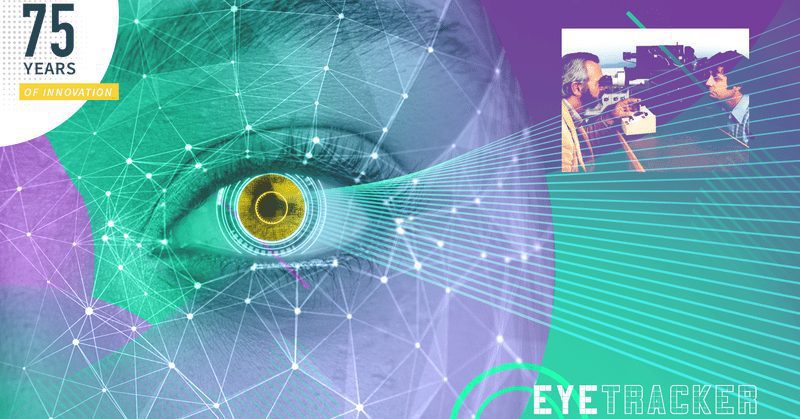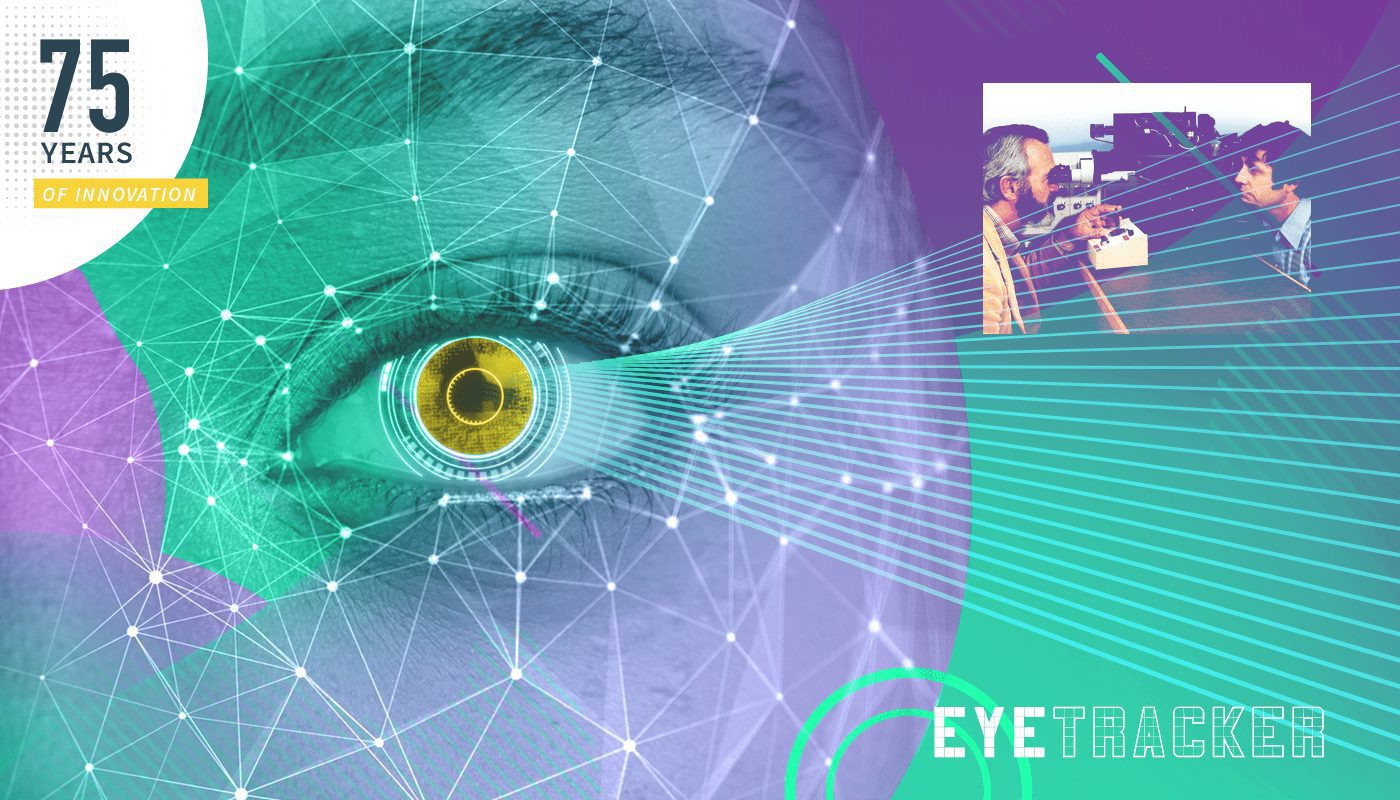The 75 Years of Innovation series highlights the groundbreaking innovations spanning from SRI’s founding in 1946 to today. Each week, SRI will release an innovation, leading up to its 75th anniversary in November 2021.

How SRI opened the world’s eyes to the power of eye-tracking
If you stare deeply into someone’s eyes, you won’t see an unmoving object. Instead, the eyelid flickers, the pupil gets larger or smaller in response to light changes, and the eyeball moves as it focuses and tracks your gaze. Eyes are continually moving. These movements are both voluntary and involuntary and offer data that can be used in medicine, biometrics and even web design. Beginning in the 1960s and over the following two decades, SRI and NASA collaborated to develop an eye-movement tracking method that opened up many varied applications. This is the story of how SRI looked deeply into our eyes and created the Eyetracker.
What SRI researchers saw when they looked into our eyes
The eye is a complex organ. Eyes are so complicated that they are often used to attempt to disprove evolutionary theory. “After all,” the argument goes, “surely something this complicated must have a designer.” Evolutionary biologist Richard Dawkins dispelled this argument in The Blind Watchmaker. This book details the processes of natural selection that led to the development of all of the complex features of the mammalian eye. And the eye is indeed complex. Its many parts each perform a function and interconnect to deliver images to the brain, creating our sense of vision. One thing has become clear about our eyes — they are continuously in motion. There are three types of eye movements:
- High-frequency, irregular movements: there are around 30–70 per second and include very small movements of about 20 arcseconds (a unit equal to 1/3600th of a degree of angular measurement).
- Flickering movements, known as saccade: these are larger — though still very small — movements, consisting of several arcminutes (1/60th of a degree), occurring at regular intervals of about one second.
- Irregular drifts and fixation reflex: as saccades occur, there are also slow, irregular drifts. The saccades are a corrective mechanism and form the basis of a fixation reflex.
In 1965, NASA engaged SRI International to develop a method of accurately measuring these eye movements. The research’s original purpose was to improve flight safety by alleviating the visual blurring experienced by pilots flying at high speed and low altitude. As with many of SRI International’s projects, the original research resulted in many more applications for civilian life. Tracking eye movement proved to be valuable in areas as diverse as medicine and web design.
Tracking an eye and building a commercial success
Over two decades, SRI International worked on eye-movement tracking, creating a commercial system known as Eyetracker. During the years of development from 1965 to 1988, Eyetracker went through five generations. The resulting Eyetracker systems were a mix of monocular and binocular configurations. As the eye-tracking technology matured, the potential for commercial applications multiplied.
In 1988, Eyetracker was licensed to Fourward Optical Technologies, which continued developing the system and brought it into the marketplace. Fourward Optical Technologies developed a research instrument called the dual-Purkinje-image (DPI) Eyetracker. Purkinje images are reflections of objects within the structures of the eye. Of the four normal Purkinje images, two are used by the DPI Eyetracker to accurately determine the direction of gaze over a large, two-dimensional visual field. A significant aspect of the DPI Eyetracker was that it could operate with infrared light, which is invisible to the subject, and not interfere with normal vision.
Applying the eye to the problem
Eyetracker has been used in many ways:
Medicine: There are many medical applications, including detecting ocular bleeding, diagnosing brain disorders and concussions by tracking involuntary eye movements, and determining circulatory health in a non-invasive way.
Web design: Tracking users’ eye movements when interacting with a website gives designers insight into web elements that work. Eyetracker can detect subtle movements of a test subject’s gaze, indicating why a user might miss important parts of a website.
Biometric uses: Another spin-off company from SRI International, Princeton Identity, has developed biometric solutions that use iris recognition in secure environments, such as airports and military installations. Eyetracking augments iris recognition, providing greater security and accuracy.
SRI’s Eyetracker technology has gone on to be used in research and medicine, and influence modern biometric applications. While the phrase “the eyes are the window to the soul” is more poetic than scientific, SRI International has shown that eye tracking can indeed reveal a lot of useful information.
Resources
Samadani U, Ritlop R, Reyes M, et al. Eye tracking detects disconjugate eye movements associated with structural traumatic brain injury and concussion. J Neurotrauma. 2015;32(8):548–556. doi:10.1089/neu.2014.3687
SRI International, The Dish, 75 Years of Innovation: Iris recognition: https://medium.com/dish/75-years-of-innovation-iris-recognition-201f7bacde61
NASA Technology Transfer Program: https://spinoff.nasa.gov/spinoff1999/hm2.htm



